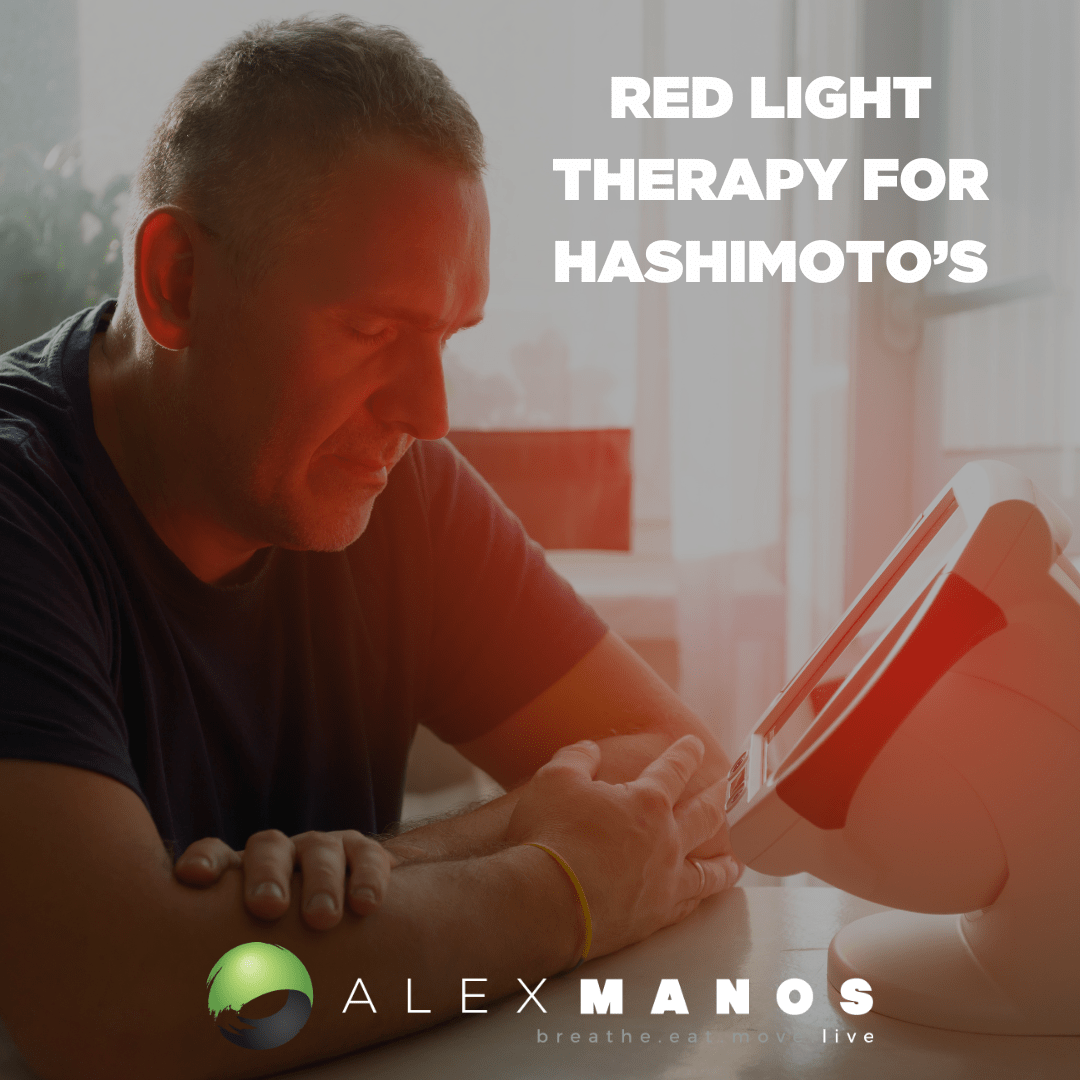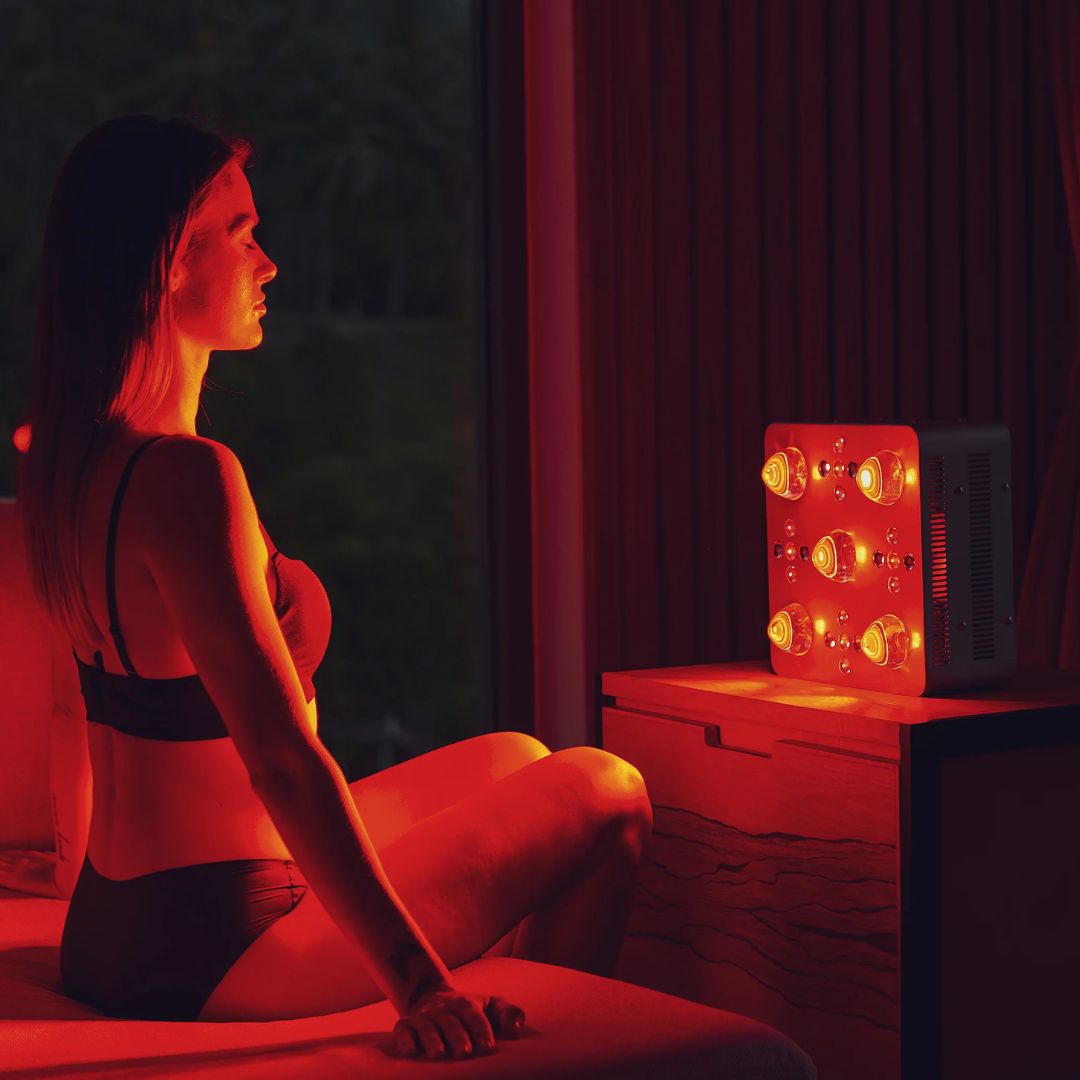Welcome to my blog on Red Light Therapy For Hashimoto’s.
You may also like to check out the section of my blog dedicated to thyroid health here.
What Is Hashimoto’s?
Hashimoto’s is an autoimmune thyroid disease that can cause an underachieve thyroid, or hypothyroidism. It is the most common cause of an underactive thyroid.
Red Light Therapy For Hashimoto’s: The Evidence
I first came across a paper published in 2020 that demonstrated that red light therapy for Hashimoto’s can be particular helpful.
In the study, a total of 350 patients diagnosed with Hashimoto`s thyroiditis, were included. Patients were classified into two groups.
- Group 1 (n = 210) received red light therapy and dietary supplementation such as vitamin D, iron, and selenium.
- Group 2 (n = 140) received dietary supplements only.
Patients’ needs for levothyroxine replacement levels, triiodothyronine (T3), thyroxine (T4), and TSH levels, T3/T4 ratio, and thyroid autoantibody levels were evaluated.
When the researchers compared both groups, the increase in T3 levels and T3/T4 ratio was markedly superior in Group 1. The decrease in thyroid peroxidase antibody (TPO Ab) levels was also significantly different between both groups. Hormone replacement needs were also significantly decreased in Group 1 compared with Group 2. The authors stated that:
Low-level laser therapy (LLLT) is 70 times more effective in increasing T3/T4 ratio and 15 times more effective in decreasing levothyroxine dosage
I find this utterly fascinating!
Since then, and actively researching this field, it became apparent that there is a fair amount of evidence for using red light theory for hashimoto’s.
In another paper published in Journal of Laser Science the authors concluded: “Investigations indicated that besides current treatment strategies, LLLT could be a promising therapeutic approach for the treatment of autoimmune thyroid disease”
LLLT stands of low level laster therapy and is used interchangeable with red light therapy, and, photobiomodulation. This is important to remember when reading some of the quotes from the papers I cite throughout this blog.
And in another paper (source) the authors initially assessed LLLT in patients with hypothyroidism caused by chronic autoimmune thyroiditis (CAT) in a pilot study. They then studied patients under the same conditions using a randomised clinical trial; the results showed a reduction in the levothyroxine (LT4) doses required to treat hypothyroidism, and 47.8% of the patients did not need to take LT4 during the 9 months of follow-up, suggesting an improvement in gland function.
47.8% of the patients did not need to take LT4 during the 9 months of follow-up, suggesting an improvement in gland function.
The reduction of thyroid peroxidase antibodies (anti-TPO) was also noted in such patients, indicating a decrease in the autoimmune process against the gland.
LLLT has a regenerative effect on various tissue types. Therefore, LLLT could also act in the regeneration of thyroid follicular cells and explain the improvement of thyroid function verified in the RCT.
Further, the researchers found that thyroid function, as estimated indirectly by the dose of LT4 required to treat hypothyroidism, was better in the patients treated with LLLT.
It’s important to acknowledge that, as they anticipated, the effects of LLLT are transient, and thus, new therapy sessions will be necessary over time to maintain the obtained results in this randomised control trial.
The RCT results showed that the effects of LLLT persisted for at least 11 months.
How Does Red Light Therapy For Hashimoto’s Work?
It seems to work via transforming growth factor-β1 (TGF-β1).
TGF-β is clearly a master regulator of the immune response, exerting either inhibitory or facilitatory effects on cells of the immune system. Thus, this molecule is involved in the pathogenesis and development of autoimmune thyroid diseases.
TGF-β1 gene (TGFB1) is one of the target genes involved in genetic predisposition to autoimmune diseases, particularly Hashimoto’s thyroiditis (HT).
In 2014 there was a randomised, placebo-controlled trial that included 43 patients with a history of levothyroxine therapy for chronic autoimmune thyroiditis-induced hypothyroidism.
The patients were randomly assigned to receive either 10 sessions of LLLT or 10 sessions of a placebo treatment twice a week. Levothyroxine was maintained at the same dose during the entire study period. TGF-β1 was measured both pre-intervention and 30 days post-intervention in both groups. The differences were calculated between the TGF-β1 values observed 30 days post-intervention and the pre-intervention TGF-β1 values for each group.
Comparing the differences in TGF-β1 levels between the treatment group and the placebo group revealed that there was a statistically significant increase in TGF-β1 levels 30 days post-intervention in group L compared with the placebo group (p=0.0379).
The researchers concluded that this suggested that the significant increase in serum TGF-β1 levels in patients with chronic autoimmune thyroiditis-induced hypothyroidism was associated with the thyroid LLLT procedure.
When Is The Best Time To Use Red Light Therapy For Hashimoto’s?
According to the researchers the best time is in subclinical hypothyroidism. In their opinion, this will be the ideal time for the use of red light therapy because the thyroid gland tissue is more preserved at this stage and better results can be achieved.
I think we can take it one step further and say the best time is before any issues arise. Based on the overall research, it seems clear we would all benefit from having an infrared light that we use as part of our selfceare.
I like to use my lamp as close to sunrise and sunset as possible to mimic the natural times we’d get peak infrared light from being outside, but any time of the day will work.
References
- Safety and Efficacy of Low-Level Laser Therapy in Autoimmune Thyroiditis: Long-Term Follow-Up Study PMID: 30532779
- Impact of Photobiomodulation on T3/T4 Ratio and Quality of Life in Hashimoto Thyroiditis PMID: 32186976
- Low-Level Laser Therapy in the Treatment of Autoimmune Thyroiditis PMID: 36743139
- Effects of low-level laser therapy on the serum TGF-β1 concentrations in individuals with autoimmune thyroiditis PMID: 25101534
- The role of transforming growth factor beta in thyroid autoimmunity: current knowledge and future perspectives PMID: 34529221
Alex is a certified Functional Medicine Practitioner (IFMCP) and has a MSc in Personalised Nutrition. He is also a breathwork facilitator with a background in personal training and massage therapy. He also runs The Resiliency Program - a 24 week program aimed at building physical, mental, emotional, and spiritual resilience.




